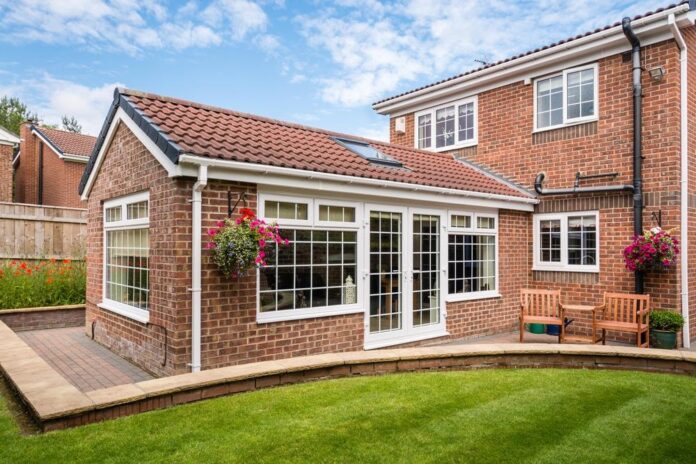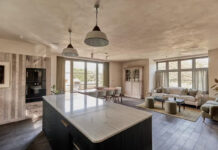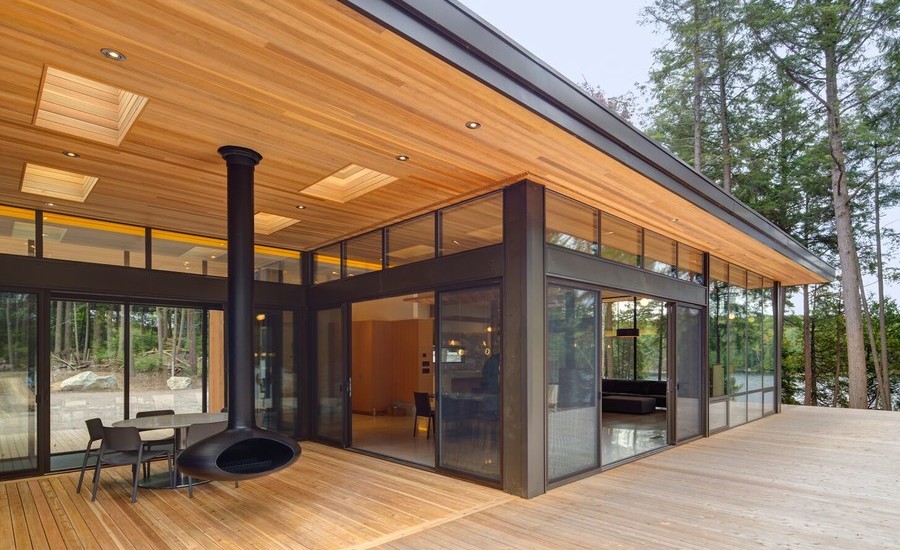Homeowners love to decorate their patios and outdoor living areas. A nice table and decorative chairs can really enhance the ambiance of your home. However, many are dissuaded from maximizing their outdoor area’s full potential because it is inaccessible during the cold weather months. However, there is a way to socialize “outside” regardless of the weather! All-season rooms are an excellent way to feel as if you are outside without actually being outside. They have a variety of benefits, and they might be just what your house needs to become your home! Read below to learn more about all-season rooms.
All-Season Room vs. Sunroom
All-season rooms and sunrooms are often used interchangeably. Even though they have many similarities, they are not technically the same by definition. A sunroom is a glassed-in living space attached to the house. It is accessible from indoors and is often called a solarium or conservatory. Sunrooms often suffer from temperature imbalances due to their glass casing, which makes them borderline unusable in extremely cold or hot weather. This is where they differ from all-season rooms.
As their name implies, all-season rooms can be used all year round, regardless of the weather outside. They are constructed with better insulating materials, which allow for better temperature control and regulation. Despite this large difference, sunrooms and all-season rooms do have much in common. They both allow occupants to experience the outdoors without being outside. Taking in the sunlight or watching the rainfall around you is particularly peaceful without dealing with the excessive heat, wetness, humidity, or bugs outside.
Building an All-Season Room
All-season rooms consist of two important foundational components, which are the structure and the glass. The structure is usually vinyl, wood, or aluminum. Vinyl is the most popular because it requires little upkeep, it is the cheapest, and it is the overall strongest material. Aluminum is a more expensive option and it is not as strong an insulator. Wood is more expensive and requires regular maintenance, but it easily meshes with screens.
All-season rooms are walled with glass to allow natural light inside and enhance the ambiance. There are several different types of glass available, each with different specifics and definitions. According to Better Home and Garden, glass walls must be “silicone double-sealed, A-rated, and labeled “tempered safety” to meet building code requirements.” There are double-glazed glass windows available with low-emissivity coating and argon filling to reflect heat and deflect ultraviolet rays.
How Much Does an All-Season Room Cost?
The cost of an all-season room depends on a variety of factors. Size, design, and materials are the most important determinants of cost. A rough estimate is $120-$300 per square foot. Hiring the contractor, electrician, and painter adds up quicker than most realize. You’ll also have to properly furnish the room. It is a significant investment, and should only be undertaken by those who can afford it. Not only is it a large financial expenditure, it is also time-consuming and you must prepare for the construction on your property.
Heating and Cooling Your All-Season Room
If you are considering adding an all-season room to your home, you must research different heating and cooling methods. You’ll want the room to be comfortable regardless of the outdoor temperature, and this, unfortunately, will not always happen naturally. Regardless of whether or not your home already has a central HVAC system with ductwork, a ductless mini split is your best option.
Ductless mini splits consist of one outdoor unit connected to anywhere from one to eight indoor units. The indoor unit is an air handler, and the outdoor unit is a condenser. They are connected by a series of wires and pipes, and there is also a drain to eliminate any moisture. Since your all-season room is an addition to your home, it will not be along the path of the existing ductwork. This is not a problem for ductless mini splits, as they can go in any room and do not require the extensive ductwork. They offer a variety of benefits such as heightened efficiency, silent operation, and air filtering capabilities. They also offer both heating and cooling capabilities, making them the ideal year-round option. Ductless mini splits are the perfect option for your all-season room!
Benefits of an All-Season Room
All-season rooms offer a variety of benefits for your home. One of their main benefits is comfort. Allowing homeowners to relax surrounded by the outdoors makes them a very appealing option. Bask in the sunlight without being uncomfortably hot and swarmed by bugs, or watch the snow fall from the comfort of a heated room and cozy blanket. Unlike an outdoor living area, they can be used all year round! All-season rooms also enhance the ambiance of your home by allowing in a high amount of natural light.
Even though they can be costly, they add financial value to your home in the long run. An all-season room is very enticing to potential buyers, and they are usually willing to pay extra for the amenity. All-season rooms also allow your home to increase its energy efficiency. The increased insulation allows your home to maintain more of the desired warm or cold air while preventing any unwanted air from entering.
This is even more enhanced if you heat and cool the room with a ductless mini split. Mini splits are some of the most energy-efficient air conditioners on the market, mainly due to their lack of ducts. As air travels from its origin throughout the ducts, some of it is lost along the way. This is wasteful and directly increases your home’s energy bill. This leads to significant savings on your energy bill, which can help offset the cost of building the room in the long run.
You’re now ready to decide if you want to add an all-season room to your home! Their countless benefits make them very appealing to homeowners. With their countless benefits, why wouldn’t you want to add a room to your home that allows you to experience all the great things of the outdoors and none of the negatives?




















